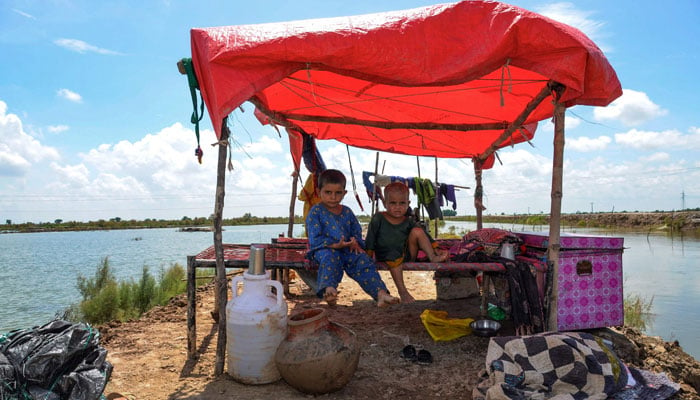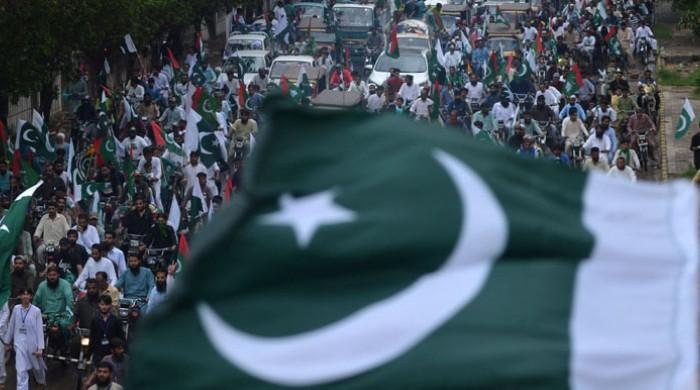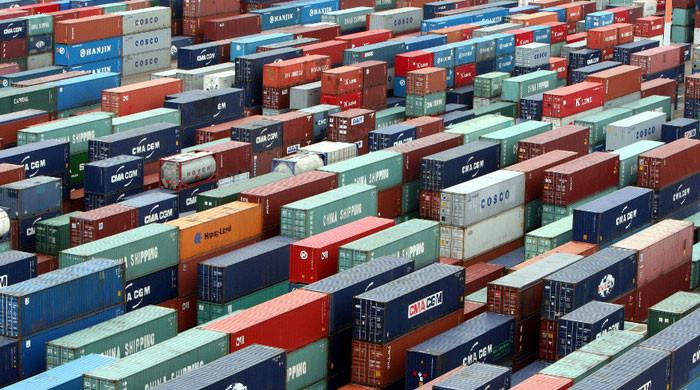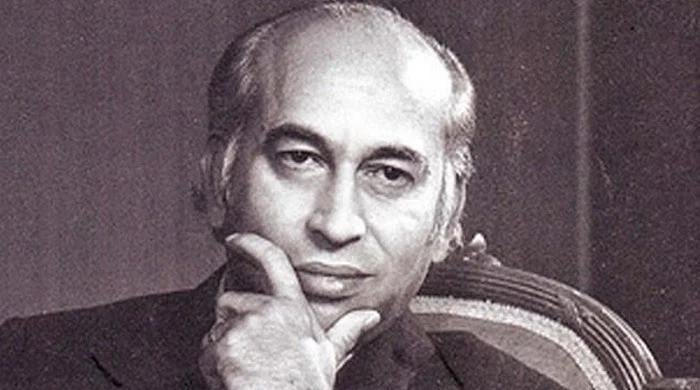District disparities and gender shifts
Gazette notification was made public on August 7 same year via the PBS website
August 20, 2024

The Council of Common Interest (CCI) approved the summary findings of the 7th Population and Housing Census during its 50th meeting on August 5, 2023.
A gazette notification was made public on August 7 the same year via the Pakistan Bureau of Statistics (PBS) website. Nearly a year later, the PBS has released the detailed findings of the 7th Population and Housing Census.
There is a shift of 133,978 from rural to urban population when compared with the summary population figures. In provinces, this decline of rural population was observed in Punjab and Sindh by 2,315 and 131,663 respectively with an equal increase in the urban population, so the provincial as well as national population remained unchanged.
Besides the above, a similar pattern of population addition and subtraction is observed in eight districts of Punjab, Sindh, and Balochistan. Toba Tek Singh shows an increase of 12,081 people, exactly the number reduced from Jhang's population.
Malir's population is 28,289 higher than the summary findings, while Karachi East sees a reduction of the same amount. Surab and Kachhi districts gain 946 and 62 people, respectively. The increase in Surab reduces Kalat's population, while the addition in Kachhi decreases Nasirabad's count.
The only plausible explanation for these changes is that there may have been adjustments or corrections in the demographics of certain census blocks in Punjab and Sindh. Another possibility is the alteration of district boundaries, either on the ground or in the records indicated above, since all population additions and subtractions occurred in neighbouring districts.
However, these changes in demographic population and district population are inconsequential in the sense that they do not have any impact on the provincial or national population.
The overall and provincial populations by sex and sex ratio are very well elaborated in the detailed report of the PBS so we intend not to repeat that in this article.
The overall sex ratio (number of males per 100 females) increased from 105 to 106, which implies that overall there is one more male per 100 females. The sex ratio has increased in all provinces except Balochistan, where it decreased from 110.82 to 109.02. In Balochistan, the proportion of the female population rose from 47.43% to 47.84%.
The population census data did not provide the disaggregation of South Waziristan as two separate districts and it also does not mention the newly formed districts of Taunsa, Kot Addu, Wazirabad, Talagang, Murree, Hub and Usta Muhammad as separate districts.
Generally, complying with overall sex ratio, the majority of the districts (127 out of 136) have a higher male population than female. Chaman district is an outlier where there are 12% more men than women. Similarly Dera Bugti and Sherani districts have 10% more male population.
Defying all odds, three districts in Khyber Pakhtunkhwa — Hangu, Lower Dir, and Upper Dir — have a higher female population. Gender parity is found in the population of Abbottabad, Buner, Gujrat, Mandi Bahauddin, Attock and Chakwal, which means populations of both genders are found equal at zero decimal point.
When comparing the proportions of the district female population of the 2023 census with the 2017 census, we observe a ±3.0% deviation over six years. This comparison, done to zero decimal points to avoid deviations smaller than 0.5%, yields conclusive insights at the district level across the two most recent population censuses.
For the purpose of comparison, the number of districts was reduced to 129 from 136. We consider Kohistan as a single district rather than three districts due to the availability of the 2017 census data. Similarly, Chitral is considered one district rather than Upper Chitral and Lower Chirtal. Karachi West & Keamari, Kalat & Surab, Loralai & Duki and Killa Abdullah & Chaman are treated as single districts.
Female population proportion increased in 37 districts and decreased in 49 districts. In 43 districts including Islamabad, the female population proportion remained unchanged — the difference might be less than 0.5%.
In KP, 17 districts show a decrease in female population proportion; five have increased, while ten maintain the same female population proportions.
In Punjab, 18 districts have a decline in female population proportions, five districts show an increase, and 13 districts remain unchanged.
In Sindh, eight districts show a decrease, 12 show an increase, and nine maintain similar female population proportions.
In Balochistan, six districts have a decrease in female proportions, 15 districts show an increase, and ten districts have unchanged female population proportions.
The Kohistan district was split into three districts in the 2023 census, with the aggregate female population of all three districts comprising 48.96%, up from 45.88% in the 2017 census. Kohistan shows the highest increase in female proportions since 2017. Following this, the female proportions of Kech and Quetta districts increased by 2.0%. The female population proportion of Kech rose from 45.66% to 47.66%, while in Quetta, it increased from 47.53% to 49.17%.
Female population proportions of 34 districts show a 1% increase since 2017. These districts are Abbottabad, Awaran, Chagai, Chiniot, Dadu, Gwadar, Harnai, Jamshoro, Jhal Magsi, Kashmore, Kasur, Khairpur, Killa Saifullah, Lasbela, Loralai & Duki, Matiari, Musakhel, Muzaffargarh, Naushero Feroz, Nowshera, Okara, Peshawar, Pishin, Rajanpur, Sanghar, Shaheed Benazirabad, Shikarpur, Sibi, Sohbatpur, South Waziristan, Tando Allahyar, Tharparkar, Thatta and Ziarat.
In 49 districts of Pakistan, female population proportions declined since the 2017 census. The highest decrease in female population proportions is in the Orakzai district where female population proportion was 49.83% in the 2017 census while it declined to 47.17%. Up to a 2.0% decrease in female population proportions is observed in nine districts — Dera Bugti, Gujrat, Jhelum, Karak, Kharan, Killa Abdullah & Chaman, Kurram, Narowal and Washuk.
The remaining 39 districts show a 1% decrease in female population: Bahawalnagar, Bannu, Battagram, Bhakkar, Chakwal, Charsadda, Chitral, Dera Ismail Khan, Faisalabad, Hangu, Haripur, Hyderabad, Jhang, Kamber Shahdadkot, Karachi Central, Karachi East, Karachi South, Khanewal, Khushab, Khuzdar, Khyber, Kohat, Lahore, Larkana, Layyah, Lodhran, Malakand, Mandi Bahauddin, Mansehra, Mardan, Mastung, Mianwali, Mirpurkhas, Rahim Yar Khan, Shangla, Sialkot, Sukkur, Toba Tek Singh and Tor Ghar.
Sustained female population proportions were observed in 43 districts: Attock, Badin, Bahawalpur, Bajaur, Barkhan, Buner, Dera Ghazi Khan, Ghotki, Gujranwala, Hafizabad, Islamabad, Jacobabad, Jaffarabad, Kachhi, Kalat and Surab, Karachi Korangi, Karachi West & Keamari, Kohlu, Lakki Marwat, Lower Dir, Malir, Mohmand, Multan, Nankana Sahib, Nasirabad, North Waziristan, Nushki, Pakpattan, Panjgur, Rawalpindi, Sahiwal, Sajawal, Sargodha, Sheikhupura, Sherani, Swabi, Swat, Tando Muhammad Khan, Tank, Umerkot, Upper Dir, Vehari and Zhob districts.
Bottom line: There are some paradoxical deviations between the detailed report and the summary findings. The 2023 Census reveals an increase in the sex ratio, indicating a decline in the proportion of the female population.
Gender proportions in districts show a deviation of ±3.0% compared to the 2017 Census. A decline in female population proportions was noted in 49 districts, while the remaining districts either maintained the same proportions or showed an increase in female population proportions.
The writer works at TDEA-FAFEN and can be reached at: [email protected]
Disclaimer: The viewpoints expressed in this piece are the writer's own and don't necessarily reflect Geo.tv's editorial policy.
Originally published in The News











